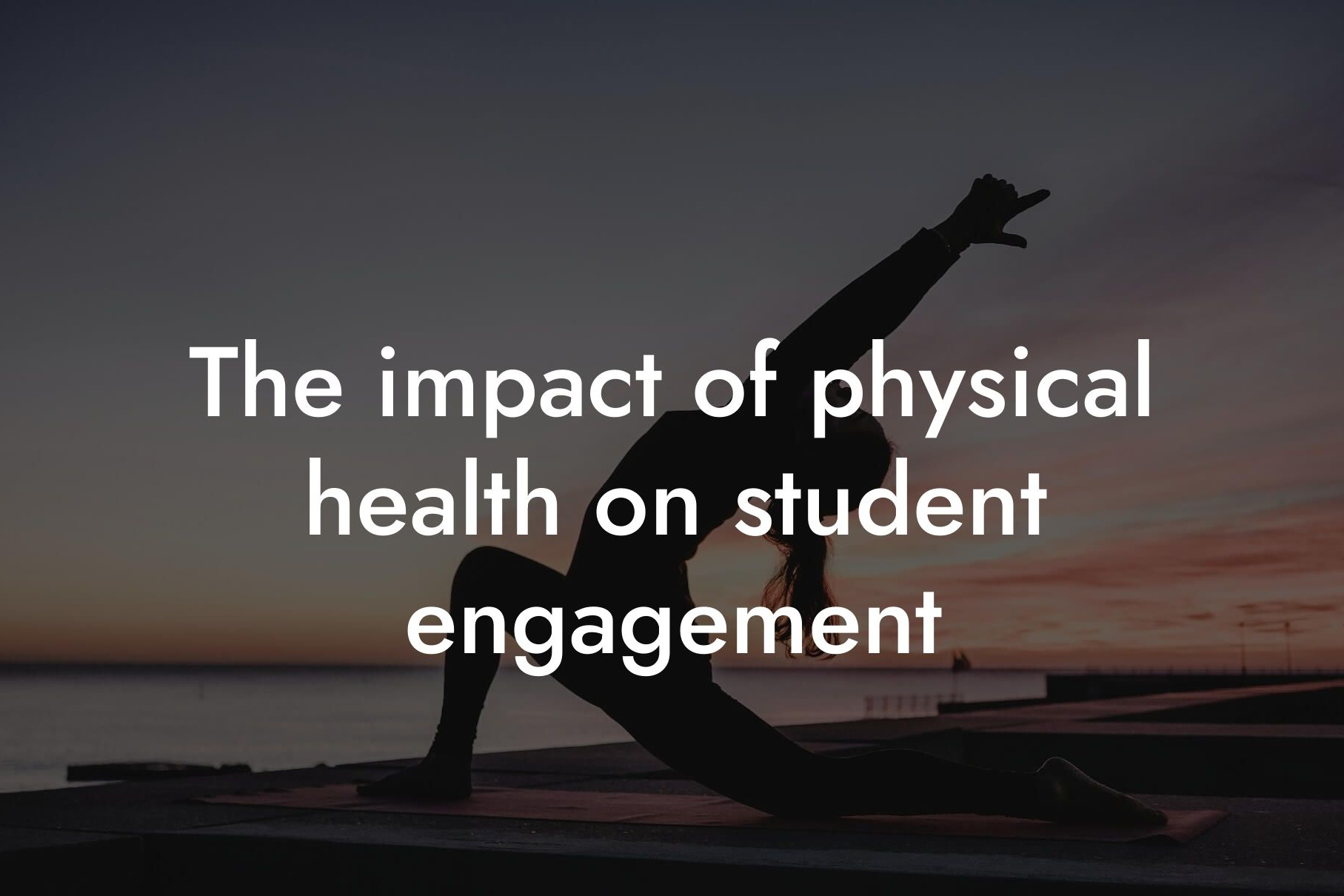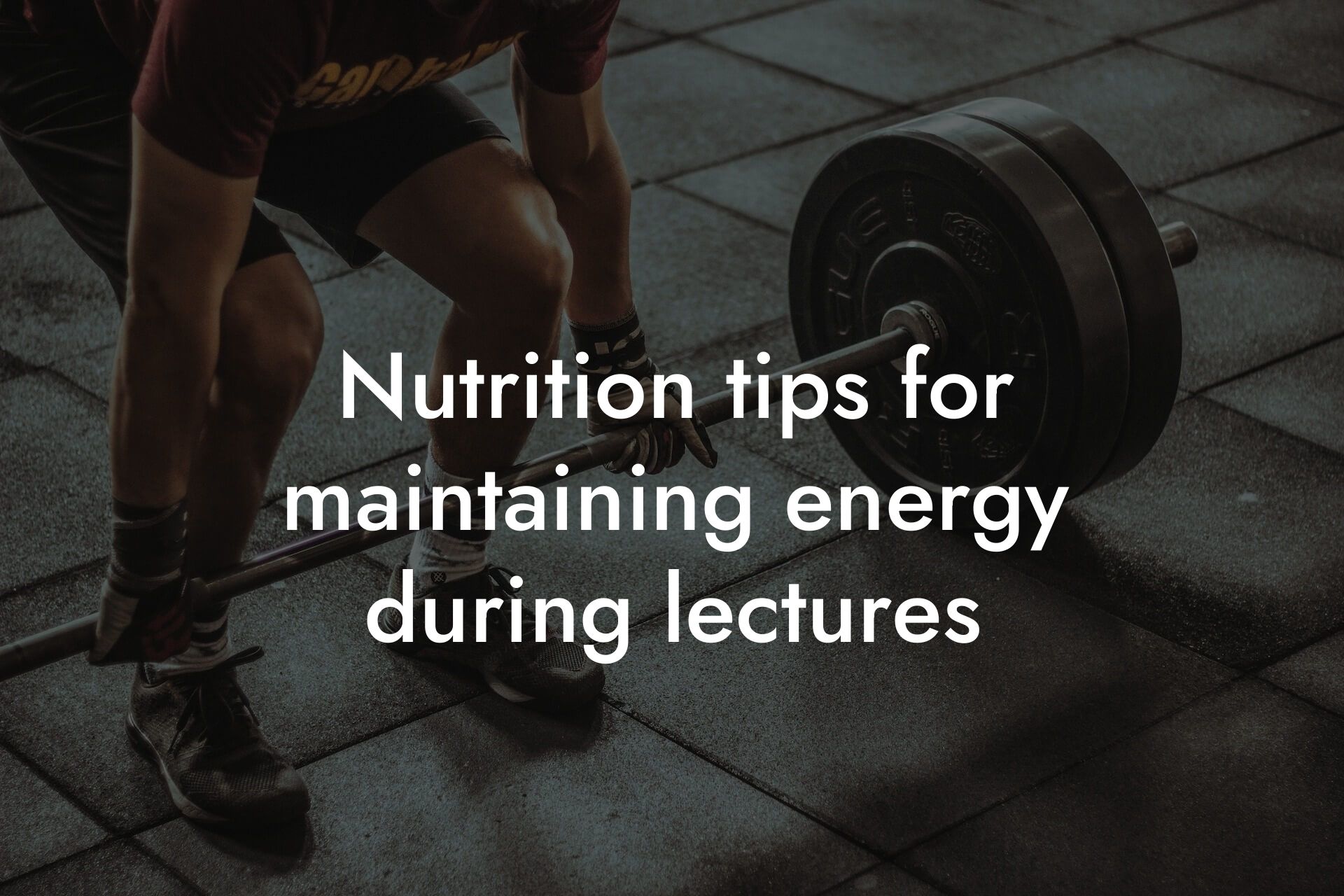As a high-earning professional, you understand the importance of maintaining a healthy physique and optimal body composition. But did you know that your physical fitness can also have a significant impact on your teaching abilities? In this article, we'll explore the connection between fitness and effective teaching, and how prioritizing your physical health can improve your performance in the classroom.
Table of Contents
The Importance of Energy and Endurance
Teaching is a physically demanding profession that requires a high level of energy and endurance. Standing for long periods, moving around the classroom, and engaging with students can be exhausting, especially for those who are not physically fit. When you're in good physical shape, you're better equipped to handle the physical demands of teaching, which means you can focus on what really matters – delivering high-quality instruction to your students.
Regular exercise can help increase your energy levels, reduce fatigue, and improve your overall physical stamina. This, in turn, can help you stay focused and motivated throughout the school day, even during the most challenging lessons.
Improved Mental Clarity and Focus
Fitness is not just about physical health; it also has a profound impact on mental well-being. Regular exercise has been shown to improve cognitive function, boost mood, and enhance mental clarity. When you're physically fit, you're better able to concentrate, think critically, and make sound decisions – all essential skills for effective teaching.
Exercise has also been shown to reduce stress and anxiety, which are common challenges faced by teachers. By prioritizing your physical fitness, you can better manage the emotional demands of teaching and stay calm under pressure.
Better Time Management and Organization
Fitness requires discipline, dedication, and time management skills – all of which are essential for effective teaching. When you're physically fit, you're more likely to prioritize your time, set realistic goals, and stay organized. These skills can help you plan engaging lessons, manage your classroom, and meet deadlines.
Regular exercise can also help you develop a sense of accountability and responsibility, which can translate to other areas of your life, including your teaching practice.
Enhanced Creativity and Innovation
Fitness can also have a positive impact on your creativity and innovation in the classroom. Exercise has been shown to increase blood flow to the brain, which can stimulate new ideas and approaches to teaching. When you're physically fit, you're more likely to think outside the box, try new strategies, and adapt to changing circumstances.
Regular physical activity can also help you develop a growth mindset, which is essential for effective teaching. By embracing challenges and pushing yourself outside of your comfort zone, you can develop new skills, take risks, and innovate in the classroom.
Better Role Modeling for Students
As a teacher, you're a role model for your students, and your physical fitness can have a profound impact on their attitudes and behaviors. When you prioritize your physical health, you're setting a positive example for your students, who are more likely to follow your lead and adopt healthy habits themselves.
By modeling healthy behaviors, you can help promote a culture of wellness in your classroom and school, which can have a lasting impact on your students' lives.
Reduced Absenteeism and Presenteeism
Fitness can also have a significant impact on your attendance and productivity in the classroom. When you're physically fit, you're less likely to experience illness, injury, or burnout, which can lead to absenteeism and presenteeism (being present but not fully engaged).
Regular exercise can help boost your immune system, reduce stress, and improve your overall physical and mental well-being, which means you're more likely to be present, focused, and engaged in the classroom.
Improved Self-Care and Self-Esteem
Fitness is not just about physical health; it's also about self-care and self-esteem. When you prioritize your physical fitness, you're taking care of yourself, both physically and emotionally. This can lead to increased confidence, self-esteem, and a more positive self-image.
Regular exercise can also help you develop a sense of self-worth and self-efficacy, which can translate to other areas of your life, including your teaching practice. When you feel good about yourself, you're more likely to take risks, try new approaches, and push yourself outside of your comfort zone.
In conclusion, the connection between fitness and effective teaching is clear. By prioritizing your physical fitness, you can improve your energy and endurance, mental clarity and focus, time management and organization, creativity and innovation, role modeling for students, attendance and productivity, and self-care and self-esteem.
As a high-earning professional, you understand the importance of investing in yourself and your career. By making fitness a priority, you can take your teaching to the next level, improve your overall well-being, and make a lasting impact on your students' lives.
At Tano Performance Group, we're committed to helping high-earning professionals like you achieve optimal physical fitness and body composition. Our state-of-the-art DEXA machine provides a complete body assessment, giving you the information you need to take your fitness and teaching to the next level. Contact us today to learn more about how we can help you achieve your goals.
Frequently Asked Questions
What is the connection between fitness and effective teaching?
Fitness and effective teaching are closely linked as physical activity has been shown to improve cognitive function, boost energy levels, and enhance overall well-being. When teachers prioritize their physical health, they become more effective educators, better equipped to engage and inspire their students.
How does exercise impact a teacher's mental health?
Regular exercise has been proven to reduce stress and anxiety, common challenges faced by teachers. Physical activity stimulates the release of endorphins, which can help alleviate symptoms of depression and improve overall mental well-being.
Can fitness really improve a teacher's classroom performance?
Absolutely! Fitness has been shown to enhance focus, concentration, and creativity, all essential qualities for effective teaching. When teachers are physically fit, they're better able to manage their classrooms, respond to challenging situations, and provide individualized support to their students.
What are some common barriers to fitness for busy teachers?
Time constraints, lack of energy, and limited access to fitness resources are common obstacles faced by busy teachers. However, with a little creativity and planning, teachers can incorporate physical activity into their daily routine, even on the most hectic days.
How can teachers prioritize fitness when they have so many other responsibilities?
By making fitness a non-negotiable part of their daily routine, teachers can prioritize their physical health without sacrificing their other responsibilities. This might involve waking up earlier for a morning workout, using breaks to stretch or move, or finding activities that can be done with students, such as recess games or classroom yoga.
What are some simple exercises that can be done in a classroom or office?
Bodyweight exercises like push-ups, squats, and lunges can be done in a classroom or office, as can chair yoga, desk stretches, and short walks. These exercises can help increase energy levels, reduce stress, and improve focus.
How can fitness improve a teacher's relationships with their students?
When teachers prioritize their physical health, they become more patient, empathetic, and understanding. This, in turn, can lead to stronger, more positive relationships with their students, who are more likely to respond positively to a teacher who is energized, motivated, and invested in their well-being.
Can fitness really help reduce teacher burnout?
Yes! Fitness has been shown to reduce symptoms of burnout, including emotional exhaustion, cynicism, and reduced performance. By prioritizing their physical health, teachers can increase their resilience, reduce stress, and maintain their passion for teaching.
How does fitness impact a teacher's ability to manage their classroom?
When teachers are physically fit, they're better able to manage their classrooms, respond to challenging behaviors, and maintain a sense of calm and control. This, in turn, can lead to a more positive, productive learning environment.
What role does nutrition play in a teacher's overall fitness and well-being?
Nutrition plays a critical role in a teacher's overall fitness and well-being. A balanced diet that includes plenty of fruits, vegetables, whole grains, and lean protein sources can help support energy levels, reduce stress, and promote overall health and well-being.
How can teachers balance their fitness goals with their busy schedules?
By setting realistic goals, finding activities that can be done in short intervals, and prioritizing self-care, teachers can balance their fitness goals with their busy schedules. This might involve finding a workout buddy, scheduling fitness into their daily planner, or finding online resources that offer quick, effective workouts.
What are some common fitness myths that teachers should be aware of?
Common fitness myths include the idea that you need to spend hours at the gym, that fitness is only for young people, or that you need to be a certain size or shape to be fit. These myths can be discouraging and unrealistic, and teachers should be aware of them as they embark on their fitness journey.
How can teachers find time to exercise during the school year?
Teachers can find time to exercise during the school year by waking up earlier, using breaks to move, finding activities that can be done with students, or scheduling fitness into their daily planner. They can also explore online resources, fitness apps, and workout videos that offer quick, effective workouts.
What are some benefits of group fitness for teachers?
Group fitness can provide teachers with a sense of community, accountability, and motivation. It can also offer a much-needed break from the isolation of the classroom, providing an opportunity to socialize, connect with colleagues, and build relationships.
How can teachers measure their progress and stay motivated?
Teachers can measure their progress by tracking their workouts, monitoring their progress towards their fitness goals, and celebrating their successes. They can also find a workout buddy, join a fitness community, or reward themselves for reaching milestones to stay motivated.
What role does sleep play in a teacher's overall fitness and well-being?
Sleep plays a critical role in a teacher's overall fitness and well-being. Adequate sleep can help support energy levels, reduce stress, and promote overall health and well-being, while lack of sleep can lead to fatigue, irritability, and decreased productivity.
How can teachers prioritize self-care and avoid burnout?
Teachers can prioritize self-care and avoid burnout by making time for activities that bring them joy, practicing mindfulness and meditation, and setting realistic boundaries with their work. They can also prioritize their physical health, seek support from colleagues and friends, and take breaks when needed.
What are some common fitness injuries that teachers should be aware of?
Common fitness injuries that teachers should be aware of include shin splints, plantar fasciitis, and muscle strains. By taking preventative measures, such as warming up and cooling down, stretching, and listening to their bodies, teachers can reduce their risk of injury and maintain their physical health.
How can teachers find fitness resources and support?
Teachers can find fitness resources and support through online communities, fitness apps, and workout videos. They can also seek out local fitness studios, gyms, and personal trainers, or connect with colleagues and friends who share their fitness goals.
What are some tips for teachers who are new to fitness?
Tips for teachers who are new to fitness include starting slowly, finding activities that bring them joy, and seeking support from colleagues and friends. They should also focus on progress, not perfection, and celebrate their successes along the way.
How can fitness improve a teacher's overall quality of life?
Fitness can improve a teacher's overall quality of life by increasing energy levels, reducing stress, and promoting overall health and well-being. It can also enhance their self-confidence, improve their mood, and increase their sense of purpose and fulfillment.
What are some ways that teachers can incorporate fitness into their daily routine?
Ways that teachers can incorporate fitness into their daily routine include waking up earlier for a morning workout, using breaks to stretch or move, finding activities that can be done with students, or scheduling fitness into their daily planner. They can also explore online resources, fitness apps, and workout videos that offer quick, effective workouts.
Here are some related articles you might love...
- The impact of physical health on student engagement
- How DEXA scans can benefit education professionals
- Nutrition tips for maintaining energy during lectures
- How educators can stay fit during long teaching days
- The role of physical fitness in classroom management
- Balancing grading and lesson planning with personal fitness
- Managing stress through physical fitness in teaching
- Quick workouts for educators during breaks
- How to stay active in a sedentary teaching job
Zak Faulkner
Zak Faulkner is a leading authority in the realm of physical health and body composition analysis, with over 15 years of experience helping professionals optimise their fitness and well-being. As one the experts behind Tano Performance Group, Zak has dedicated his career to providing in-depth, science-backed insights that empower clients to elevate their physical performance and overall health.
With extensive knowledge of DEXA technology, Zak specializes in delivering comprehensive body assessments that offer precise data on body fat, muscle mass, bone density, and overall physique. His expertise enables individuals to make informed decisions and achieve their fitness goals with accuracy and confidence. Zak’s approach is rooted in a deep understanding of human physiology, combined with a passion for helping clients unlock their full potential through personalised strategies.
Over the years, Zak has earned a reputation for his commitment to excellence, precision, and client-focused service. His guidance is trusted by top professionals who demand the best when it comes to their health. Whether advising on fitness programs, nutritional strategies, or long-term wellness plans, Zak Faulkner’s insights are a valuable resource for anyone serious about taking their health and fitness to the next level.
At Tano Performance Group, Zak continues to lead our Content Team revolutionising how professionals approach their physical health, offering unparalleled expertise that drives real results.




